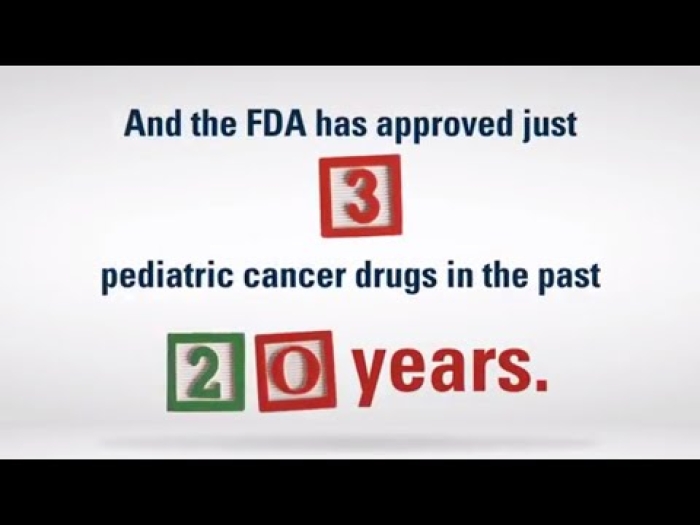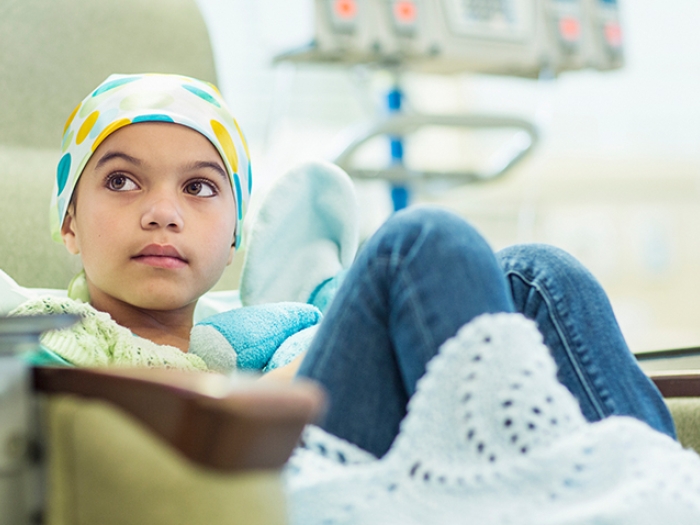Atypical Teratoid Rhabdoid Tumors are a fast-growing cancer of the brain and spine
1:50 PM
Author |

Atypical Teratoid Rhabdoid Tumors are rare, with fewer than 100 patients diagnosed in the United States every year, but the tumors can grow quickly, making them challenging to treat.
Most cases of ATRT are diagnosed in newborns and children who are less than three years old.
Recently, CureSearch for Children’s Cancer, a privately funded organization, recognized the work of John Prensner, M.D., Ph.D., a pediatric neuro-oncologist at University of Michigan Health C.S. Mott Children’s Hospital and assistant professor of pediatrics and biological chemistry at Michigan Medicine, with their 2025 Young Investigator Award.
Here, Prensner answers questions about ATRT and how researchers are working to improve our understanding of the disease.
What causes ATRT?
Prensner: Unlike most cancers that are associated with smoking, diet or environmental factors, ATRT is a genetic disorder.
It can either run in the family or a child can be born with a genetic change that occurred in their stem cells when they were growing.
There is a single gene called SMARCB1 that is disrupted in over 90% of ATRT patients.
Normally, this gene is responsible for preventing cancer in healthy individuals. However, in cancer, it becomes inactivated, and tumors are formed when that control is lost.
What are the warning signs that parents can look out for?
Prensner: The most common signs are changes in the head shape and developmental delays.
In children who are less than a year old, the bones that surround their brain are not knit together yet.
As the tumor grows, it pushes the bones apart and you see the head growing too fast too soon.
In older children, the tumor doesn’t have space to grow, and it can cause nausea, loss of balance and an inability to walk or feed themselves.
When they come into the hospital, we diagnose ATRT through MRI scans or by extracting a tissue sample via surgery and running a genetic analysis.
What are the current therapies?
Prensner: The first step is surgery because these tumors often occur in large masses in the back of the brain.
Even if you take the whole tumor out, it’s not enough.
There are always some tumor cells left behind that sneak around in places you can’t see. However, further treatment options depend on the patient’s age.
In older children, we conduct radiation therapy because we know it is very effective for ATRT.
Afterwards, these children may also need chemotherapy.
In younger children, unfortunately, radiation can harm their developing brains.
Instead, they are exposed to higher doses of chemotherapy and undergo stem cell transplants.
We can also explore using scaled-back radiation to target specific spots around the tumor mass, but it depends on the tumor and the child’s age.
Survival from ATRT is possible for both older children and infants, but the chance of survival is better with the former.
If the disease does not spread, most older children may survive. However, if it does, survival is generally poor, with fewer than 1 in 5 patients achieving long-term cures.
What does ATRT research focus on?
Prensner: Researchers are interested in understanding how genes behave in the tumors.
Since this cancer develops early, there are a lot of biological programs in the brain that are being changed and we need to know how it happens.
Another question is why ATRT varies so much among patients.
For most of them, the only genetic difference you see is in the SMARCB1 gene, which is different from other cancers where there is a cornucopia of changes.
Even so, some patients do well and some don’t, which leads us to suspect that there is some other factor we haven’t discovered yet.
We are also taking a global approach and trying to discover new therapies that might work on ATRT, even if we can’t guess ahead of time whether something might work or not.
For example, gemcitabine has been used as a drug for other types of cancer.
When researchers have tested it on ATRT, it seems to work and is going into the clinical trial stage very soon.
What are the challenges you face with ATRT research?
Prensner: We don’t have many research tools, such as cancer cell lines and mouse models, that we can use for ATRT.
As a result, it is difficult to understand the disease in our lab environment.
An additional challenge is we don’t have enough patient samples that can show us how these tumors change over time.
Each therapy procedure changes the nature of the tumor cell.
By the time we obtain samples, they may have already been treated and we have to figure out what they originally looked like.
Monetarily, rare diseases like ATRT receive little attention from large funding bodies, which are more focused on other common types of cancer.
However, it is important to remember that we are not talking about modest extensions of life.
We are trying to completely cure all our patients so that they can grow up and have fulfilling lives.
Fortunately, advocacy groups and foundations like CureSearch have helped us carry out our fight against childhood cancer.
Sign up for Health Lab newsletters today. Get medical tips from top experts and learn about new scientific discoveries every week.
Sign up for the Health Lab Podcast. Add us wherever you listen to your favorite shows.

Explore a variety of health care news & stories by visiting the Health Lab home page for more articles.

Department of Communication at Michigan Medicine

Assistant Professor


Want top health & research news weekly? Sign up for Health Lab’s newsletters today!




